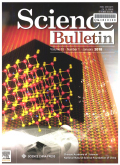- 钛学术文献服务平台 \
- 学术期刊 \
- 基础科学期刊 \
- 自然科学总论期刊 \
- 科学通报(英文版)期刊 \
Simulation of freezing and melting of soil on the northeast Tibetan Plateau
Simulation of freezing and melting of soil on the northeast Tibetan Plateau
基本信息来源于合作网站,原文需代理用户跳转至来源网站获取
摘要:
Using observational data spanning the period from February to December 2009 and recorded at the Suli station in Qinghai Province,the land-surface model CLM3.0 was employed to simulate the freezing and melting of soil.The results indicate that the simulated soil temperature is higher than the observed soil temperature and the ultimate thawing date is earlier than the observed date during the melting period.During the freezing period,the simulated soil temperature is lower than the observed soil temperature and the ultimate freezing of the deep soil is earlier than that observed.Overall,the simulation of freezing is better than that of melting,and the simulation of a shallow layer is better than that of a deeper layer.In the original CLM3.0,it is assumed that frozen soil begins to melt when the soil temperature exceeds 0C,which is inconsistent with observations.The critical freeze-thaw temperature was calculated according to thermodynamics equations and the freeze-thaw condition was modified.In this work,the melting rate for frozen soil was reduced using the modified scheme,and the simulated soil temperature was lowered. Meanwhile,the refreezing of soil during the melting season was well simulated and more closely matched observations.Additionally,it was found that the rates of melting and freezing differ,with the former being slower than the latter,but refreezing during the melting season is rather quick.

推荐文章
A review of POPs in the fragile critical zone of the Tibetan Plateau: transport and transformation
Tibetan Plateau
Critical zone
Transport
Transformation
POPs
Boron isotope geochemistry of Zigetang Co saline lake sediments, Tibetan Plateau
Boron isotopes
Zigetang Co
Equilibrium isotopic fractionation
Boron concentration
Behavior of rare earth elements in granitic profiles, eastern Tibetan Plateau, China
Chemical weathering
Eu anomaly
Critical zone
Soil weathering
Variations of trace elements under hydrological conditions in the Min River, Eastern Tibetan Plateau
Trace elements
Concentration-discharge relationship
Tibetan Plateau
River
内容分析
关键词云
关键词热度
相关文献总数
(/次)
(/年)
引文网络
引文网络
二级参考文献 (0)
共引文献 (0)
参考文献 (0)
节点文献
引证文献 (0)
同被引文献 (0)
二级引证文献 (0)
2011(0)
- 参考文献(0)
- 二级参考文献(0)
- 引证文献(0)
- 二级引证文献(0)
引文网络交叉学科
相关学者/机构
期刊影响力
科学通报(英文版)
主办单位:
中国科学院
出版周期:
半月刊
ISSN:
1001-6538
CN:
11-1785/N
开本:
大16开
出版地:
北京东黄城根北街16号
邮发代号:
2-177
创刊时间:
1950
语种:
eng
出版文献量(篇)
9507
总下载数(次)
1
总被引数(次)
58070
期刊文献
相关文献
推荐文献
- 期刊分类
- 期刊(年)
- 期刊(期)
- 期刊推荐
力学
化学
地球物理学
地质学
基础科学综合
大学学报
天文学
天文学、地球科学
数学
气象学
海洋学
物理学
生物学
生物科学
自然地理学和测绘学
自然科学总论
自然科学理论与方法
资源科学
非线性科学与系统科学
科学通报(英文版)2022
科学通报(英文版)2021
科学通报(英文版)2020
科学通报(英文版)2019
科学通报(英文版)2018
科学通报(英文版)2017
科学通报(英文版)2016
科学通报(英文版)2015
科学通报(英文版)2013
科学通报(英文版)2012
科学通报(英文版)2011
科学通报(英文版)2010
科学通报(英文版)2009
科学通报(英文版)2008
科学通报(英文版)2007
科学通报(英文版)2006
科学通报(英文版)2005
科学通报(英文版)2004
科学通报(英文版)2003
科学通报(英文版)2002
科学通报(英文版)2001
科学通报(英文版)2000
科学通报(英文版)2011年第9期
科学通报(英文版)2011年第8期
科学通报(英文版)2011年第7期
科学通报(英文版)2011年第6期
科学通报(英文版)2011年第4期
科学通报(英文版)2011年第36期
科学通报(英文版)2011年第35期
科学通报(英文版)2011年第34期
科学通报(英文版)2011年第33期
科学通报(英文版)2011年第32期
科学通报(英文版)2011年第31期
科学通报(英文版)2011年第30期
科学通报(英文版)2011年第3期
科学通报(英文版)2011年第28期
科学通报(英文版)2011年第27期
科学通报(英文版)2011年第26期
科学通报(英文版)2011年第25期
科学通报(英文版)2011年第24期
科学通报(英文版)2011年第23期
科学通报(英文版)2011年第22期
科学通报(英文版)2011年第21期
科学通报(英文版)2011年第20期
科学通报(英文版)2011年第2期
科学通报(英文版)2011年第19期
科学通报(英文版)2011年第18期
科学通报(英文版)2011年第17期
科学通报(英文版)2011年第16期
科学通报(英文版)2011年第15期
科学通报(英文版)2011年第14期
科学通报(英文版)2011年第13期
科学通报(英文版)2011年第12期
科学通报(英文版)2011年第11期
科学通报(英文版)2011年第10期
科学通报(英文版)2011年第1期

 免费查重
免费查重










